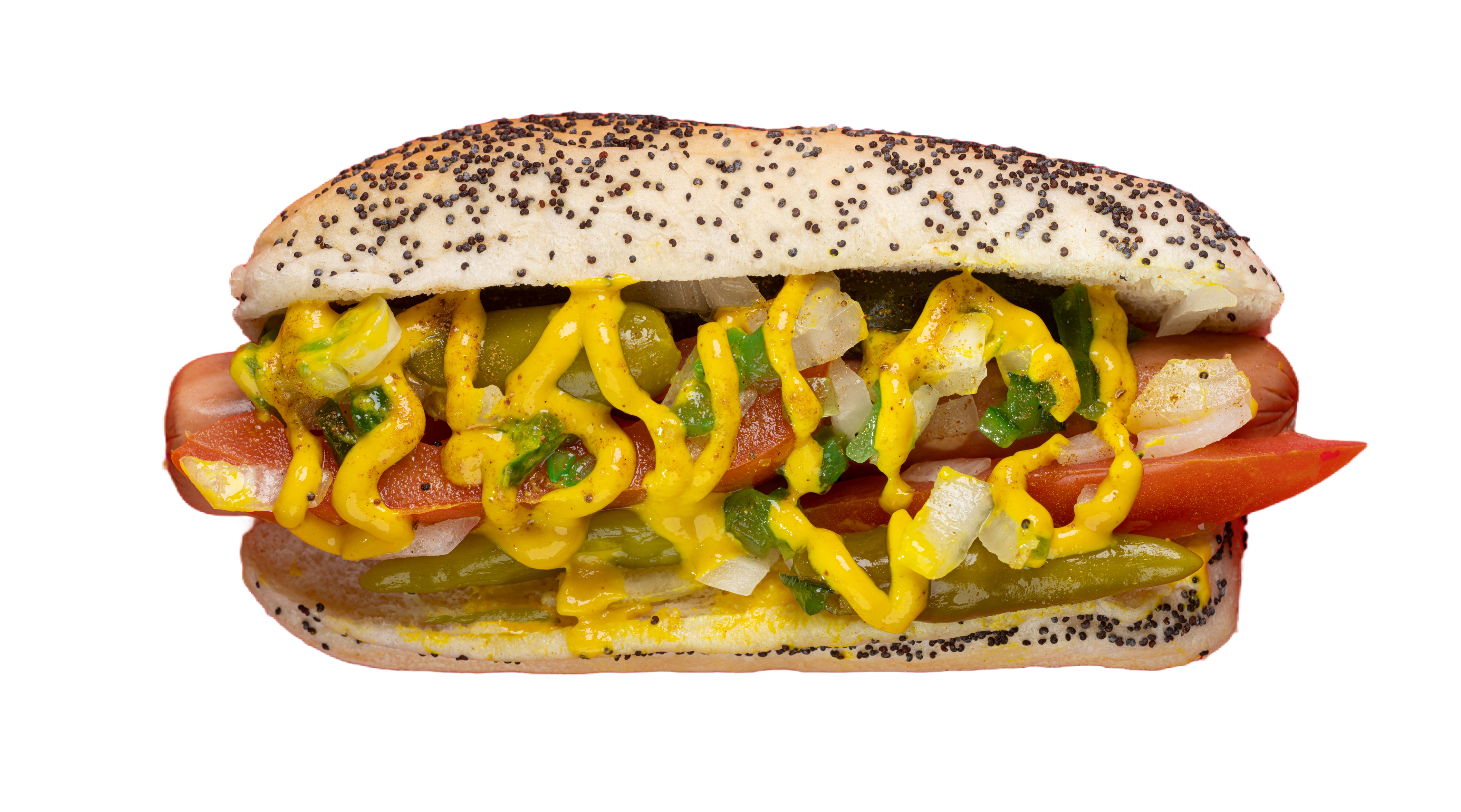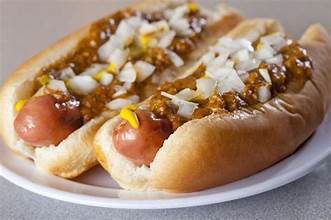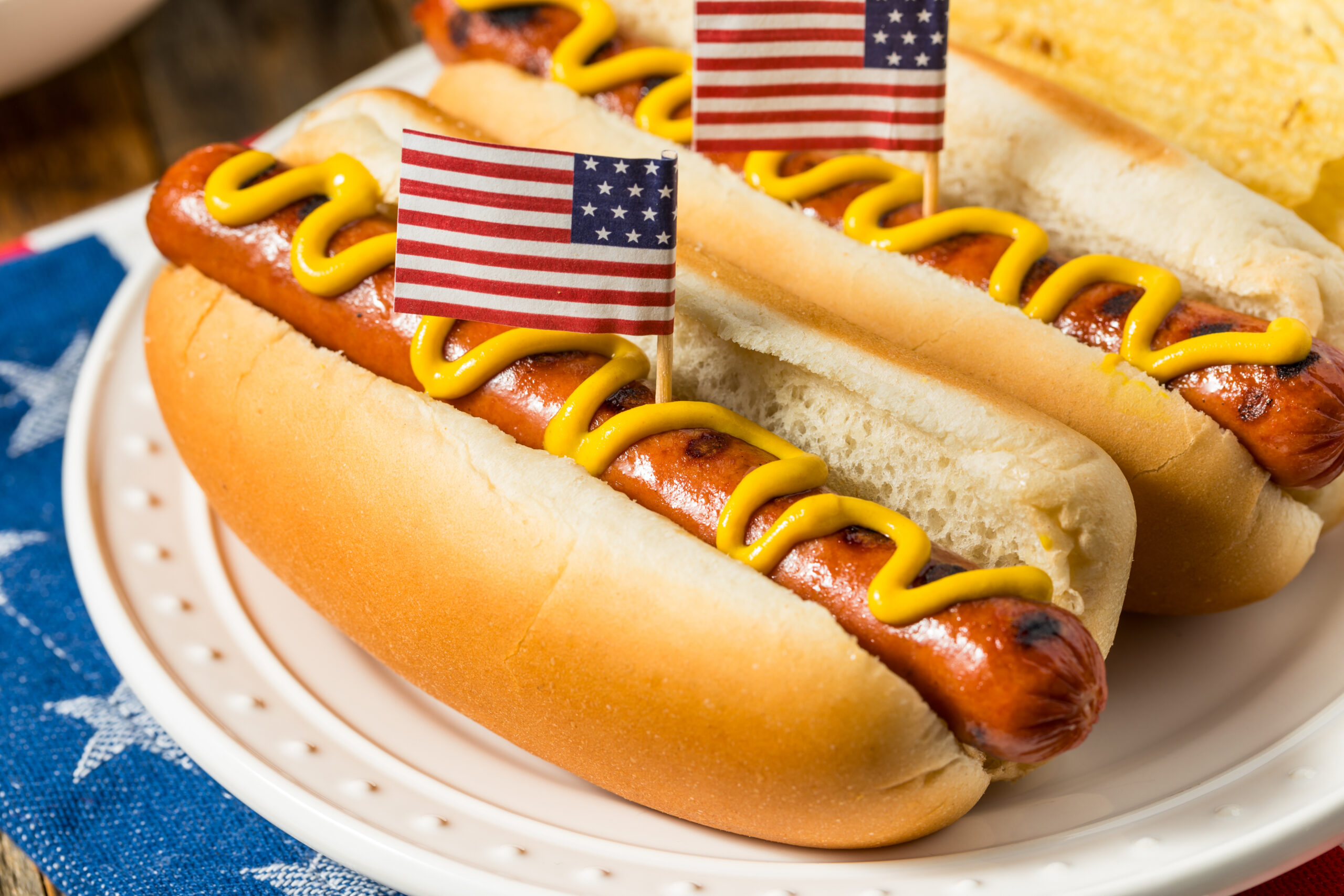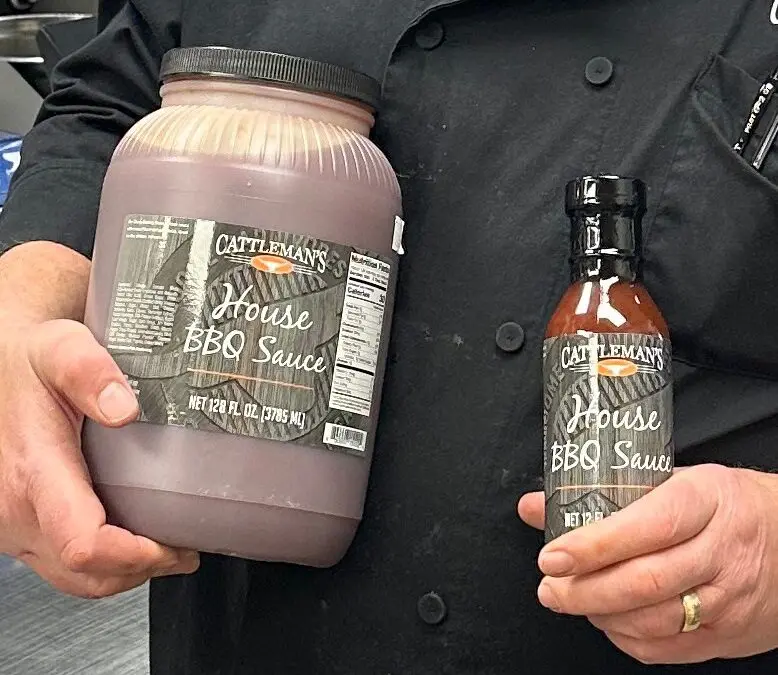You don’t need an excuse to enjoy one of America’s most iconic foods, the Hot Dog.
Having said that, summer in Michigan, is perhaps THE best occasion to fire up the grill, load up the pot, turn on the skillet or steam up one or more of these “sausages in a bun” that made its way from Germany, into the hearts (and stomachs) of Americans from coast to coast, with many unique and delicious variations along the way.

The usual explanation of how Hot Dogs (as we know them), became synonymous with the 4th of July, is a confluence of a few somewhat related cultural events starting with its being a turn of the 20th century summer baseball ballpark staple concession, then, an inexpensive meal during harder times to come, followed by being a perennial summer cook-out favorite and, of course, the famous Nathan’s Hot Dog Eating Contest, which has been held on the 4th of July since.

Nathan’s promoter Mortimer “Morty” Matz claimed that on July 4, 1916, four immigrants held a Hot Dog eating contest at Nathan’s Famous stand on Coney Island to settle an argument about who was the most patriotic.
A man by the name of Jim Mullen is said to have won the first contest
In 2022, The National Hot Dog and Sausage Council estimates Americans will eat 150 million Hot Dogs this 4th of July.
Summer is considered by most everyone, to be “Hot Dog season,” and Hot Dog manufacturers estimate that they sell more than a third of all Hot Dogs, or more than $600 million dollars’ worth, between Memorial Day and Labor Day alone.
Nearly 10% of all Hot Dog sales actually occur within July, which is National Hot Dog Month. Go figure?
The “ancient” history of the Hot Dog is both fascinating and full of mystery, legends and disagreement.
If you like, you could go back more than 2500 years ago where is it is said that the art of sausage making, was mentioned by Homer in his epic poem The Odyssey.
Later, in the 13th century, Frankfurt, and Viennese German butchers, were making smaller sausages, more resembling our modern Hot Dogs in shape, which eventually migrated to the East Coast of America where they eventually met their partner, the bun.
The ”sausage”.
Besides the seasonings which give Hot Dogs their own distinctively mild flavor, is the fact that unlike most all other “traditional” sausages, the meats chosen to be used in each Hot Dog’s recipe, are ground into a very fine, homogenized paste, before stuffing into their narrow casings.
This gives the Hot Dog, not only their own unique shape, but their own unique bite and meat texture as well.

The bun.
The earliest mention of a sausage in a bun, which many “Dog historians” believe occurred in New York City, and whose culinary pairing turned the sausage, then called a Frankfurter, into the Hot Dog, was sometime just before or just after the beginning of the 20th century.
The stories:
There are a many possible attributions of this monumental “invention” ranging from the wife of a St. Louis, MO, sausage vending German immigrant so suggested to her husband the idea of a bun to keep the customers hands clean while eating the sausage, to Charles Feltmen, a Coney Island, New York baker, who, in 1867 had a cart where he sold buns with his “Coney Island Red Hots” as they were then known.
A similar “Baker’s Story” is told of another New York immigrant, Ignatz Frischman.
Lastly, one of the more well accepted stories is of the NYC Polo Grounds food concessionaire Harry M. Stevens, who, in 1901, came up with the idea of serving a sausage in a small French roll when his (usual) waxed paper ran out.
The list of the genuine Hot Dog’s author candidates and their stories, goes on and on.
The key here, is the bun, and it’s the bun that turns the sausage into a Hot Dog.
And, as a side note, Frankfurter carts in NYC, were selling their Franks at 3 cents each, or, 2 for 5 cents.
The Frankfurter, then Hot Dog cart, became a working-class street food and, a New York City institution, which it still is to this very day.


In today’s markets, especially at Cattleman’s, you have an enormous number of brands and styles of Hot Dogs to choose from.
Among the first choices to be made when buying Hot Dogs is choosing between the traditional “Natural Casings”, with that “firm snap” and instant flavor burst, or, the “Skinless” which have a softer “bite” and are, a bit more uniform when cooking.
From there, brand recognition (both National and Regional) and learning their “signature seasonings profiles” is a bit of a preference journey, which each of us eventually develops over time.
Other choice decisions are smoked, cured or uncured, uniquely flavored, and meat types, including all beef, all pork, turkey, chicken combinations of meats and, finally, meatless altogether.
Size matters.
Hot Dogs, being a manufactured meat product, come in many different sizes. Generally speaking, foot-longs aside, the standard size of most Hot Dogs are anywhere from 4 to 1’s) or 4 to 1 pound, with 5 or 6 to 1’s being other options.
4 to 1’s are 4 ounce each, or a quarter pound.
Cooking Hot Dogs.
If choosing your “Perfect Dog” is probably your hardest decision because cooking it, basically comes down to only a few reasonably choices.
Grilling: This is an outdoor exercise. The trick is medium, NOT high heat, and, a pair of long tongs, not a fork, to turn them over multiple times so that they cook evenly and without too much blackening. For most, this is THE 4th of July Cook-Out method and one of the tastiest, if done with care.

Boiling: This is the traditional INDOORS method which only requires a medium size pot filled with water. You don’t need to season the water but it IS best to bring it to a boil before adding your Dogs, then, reduce it to simmer for about 5 to 10 minutes. The downside of boiling is that you will lose some of the hot dog’s flavor to the water. It is however, full proof otherwise.

Steaming: Steaming, is a method whereby you suspend the Dogs in a steamer basket ABOVE the boing or simmering water, then covering with a lid to trap the steam which will then cook your Hot Dogs. This method will give you a bit better tasting product as it will lose little flavor to the water. You are welcome to add beer to the water, or, if you’re really going to go for it, use 100% beer.
Pan-Frying/Griddling: If given a choice, this is what the Pro’s would prefer, and why this method is used in nearly every Coney Island and every diner that sells a good number of Hot Dogs.
The Hot Dogs are lined up, side by side on a medium hot, flat metal plate (griddle), and allowed to cook / brown evenly while rolled occasionally to evenly cook all sides. No oil is needed on a well-cured griddle as the Hot Dogs, while cooking, create a bit of their own drippings and these juices, which sizzle off each Dog, are caramelized to add additional flavor. One other variation to this method, is to add a splash of beer to these Dogs as they are nearing full doneness, which creates some steam, and also add another unique, special flavor.
A mechanical version of griddling is seen in many convenience stores and known as a Hot Dog roller.

What to put on it.
Most Hot Dog purists that enjoy the pure bliss of a great Hot Dog would likely tell you that anything other than a nice yellow mustard is sacrilegious.
However, if variety is indeed, “the spice of life”, then there is no end to list of additional condiments that you can enjoy on your Dogs, including: ketchup, relish, onions, tomatoes, cheese, sauerkraut, diced onions, jalapeños, sport peppers, chili, coleslaw, bacon, olives or whatever suits your tastes.
Hot Dogs brands at Cattleman’s
Being the Meat Experts, you could easily guess that Cattleman’s would have one of THE largest selection of Hot Dog brands and styles in town.
And, you’d be right! How about 20+ !!
Our brands include: Koegel’s, Dearborn, Winter’s, Nathan’s, Kowalski, Ballpark Brand, Oscar Mayer, National Coney Island, Eckrick, Sahlen’s, Bar S, Johnsonville, Jennie O, Butterball, Premium Polish Tradition, Scott Pete, Dutch Brand, Ozzie’s Brand, Parker House, Polk’s and Mississippi River Red Links.
That’s A LOT of DOGS!
As mentioned, many different parts of the country enjoy their Hot Dogs in different ways. Among the more distinctive and well-known versions are:
The Chicago Dog with its poppy seed bun and the signature toppings of mustard, sport peppers, bright green relish, dill pickle spear, fresh tomatoes, and celery salt.

The New York Dog A natural-casing all-beef frank topped with sauerkraut, spicy brown mustard and optional onions.
The Jersey Dog A deep-fried Dog with sauteed bell peppers, onions, and potatoes.
In the Philadelphia metro area, Texas Tommy refers to a hot dog variant in which the frank is topped with melted cheese (often cheddar) and wrapped in bacon.
And finally, The Detroit Chili Dog. Our beloved, faithful Dog. Griddled, then smothered with a signature chili sauce, yellow mustard and chopped white onion.


If you wish to treat yourself to a Detroit Style Coney Dog, Cattleman’s sells not just one, but 2 chili sauces for you to choose from and the buns, the white onions and many mustard choices to go with it.
However, if you want to enjoy a Coney dining experience in Southeast, Michigan, you wouldn’t have to gas up your Oscar Mayer Weinermobile, because you wouldn’t have very far to go.
Some of our most popular Coney Islands include: our nationally renowned Lafayette, American and Duly’s Place Coney Islands in the city, as well as out regional chains in the suburbs, such as National, Leo’s, Kirby’s and Nicky D’s among others.


Finally, there has always been a long-standing debate as to whether or not a Hot Dog is actually, a sandwich, or, something altogether different.
The National Hot Dog and Sausage Council has finally officially come out to declare (in their mind), that a Hot Dog,…is definitely not a sandwich!






